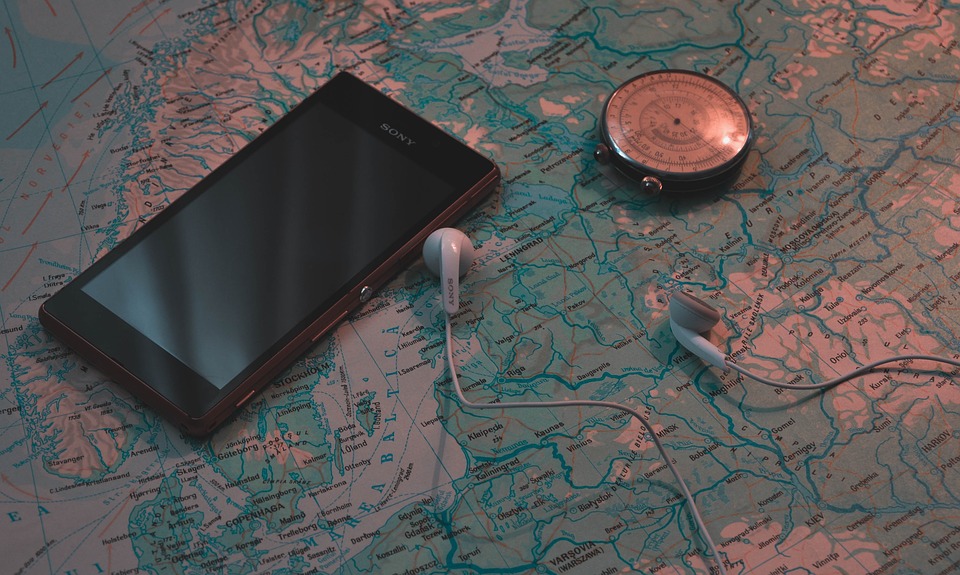When Is It Time to Disobey GPS Directions?

Credit to Author: Becky Ferreira| Date: Fri, 22 Sep 2017 17:20:00 +0000
This is a companion piece to today’s Terraform, “The Interruption.”
During a road trip with my family this summer, my sister switched on a GPS feature that calculates shortcuts based on roadwork and traffic updates. As the robotic voice calmly doled out directions, optimized by ground monitoring stations and guided by satellite constellations, I remembered how a quarter century earlier, she and I pored over pages of highway networks in road atlases from the backseat, to help our parents navigate.
It was a cliché moment, experienced by every generation, when ghosts of obsolete traditions resurface and stand contrasted with the technologies that have succeeded them. Today, solid blue lines on digital maps beckon all who seek the best of all possible routes, and train our focus on the moving dot or arrow that represents ourselves.
Today’s Terraform, Debbie’s Urbanski’s “The Interruption,” dramatizes these modern geospatial themes through the eyes of Beth, a woman who disobeys the GPS as she is driving home:
“There had been that moment at the stoplight when her phone ordered her to go straight, the direction in which their house waited, with its sagging futon, and the water damage on her son’s ceiling which they were ignoring for now. Several blocks further out, in the same direction, was her children’s school, where her daughter was drawing pictures of families that didn’t look like theirs, while her son got into fights beside the classroom cubbies. She had ignored her phone’s instructions.”
There’s something so teleological about GPS imagery that it almost seems rebellious to reject the chosen path and turn into the unhighlighted wilds. Indeed, GPS routes are alluring enough to compel drivers to blindly follow them into dangerous and even fatal situations, ignoring real-world warnings in favor of the digital path.
Some have been guided into lakes and sandpits, others off bridges and nearly over cliffsides. deaths in dangerous neighborhoods with similar street names to their intended destinations. In 2015, a senior couple in Rio de Janeiro were guided by the navigation app Waze into a dangerous neighborhood with the same street names as their upscale destination, and one of them was shot to death. Waze also accidentally sparked political violence in 2016, after Israeli troops followed the app’s route into a Palestinian refugee camp. The GPS-guided confrontation left one man dead and several wounded.
In Urbanski’s story, deviating from the instructions seems to untether Beth from cartographic reality itself. Human brains are expert catalogers of memorable landmarks for orientation, but Beth loses these bearings once she’s off the suggested route. On the phone with her husband Brian, who is securely moored within GPS-mappable reality, Beth describes a transitory and dreamlike landscape that hints at a mental break. Her connectivity to the internet, to her husband, and to her own mind are interrupted in tandem.
When she tries to find herself on the Maps app, it’s as if the algorithm finds her on a temporal plane, the highlighted blue route of her own lifespan, rather than the geospatial matrix rendered by GPS:
“Her phone couldn’t locate her. Or rather, it located her but in the incorrect places. She was, apparently, in her childhood home in Illinois. A few minutes later, she was in the resort town in Colorado where she and Brian had honeymooned. She was back in Minnesota in the middle of nowhere beside a turkey farm.”
With its moody tone and surreal scenery, “The Interruption” evokes a latent sensation of disorientation within a rigorously navigable world, and pushes the limits of the normally quotidian question: Where am I?
Get six of our favorite Motherboard stories every day by signing up for our newsletter.
https://motherboard.vice.com/en_us/rss